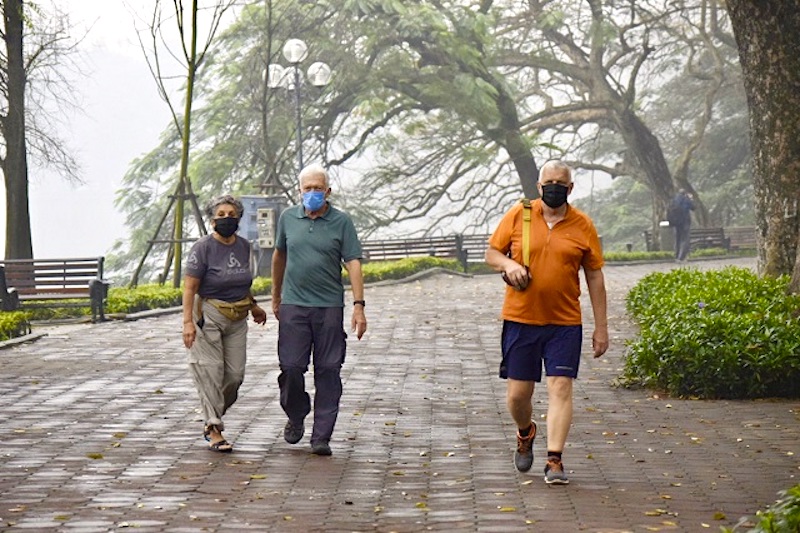The impact of the Covid-19 pandemic was clearly felt by Vietnam’s tourism industry that saw its revenue plunge 54% in the first nine months of 2020 compared to the same period of 2019, due to a sharp decline in number of domestic and international tourists, according to the latest report by the Ministry of Culture, Sports and Tourism.
| Foreign tourists in Hanoi. Photo: Duy Khanh (Kinh te & Do thi) |
Between January and September, the total tourism revenue was VND223 trillion (US$9.62 billion), a decrease of VND271 trillion (US$11.7 billion) from a year earlier.
Notably, many cities and provinces saw sharp decreases in travel revenue, with that in Hanoi dropping 42.6%, Ho Chi Minh City (-73.7%), and Danang city (-68.1%), according to the General Statistics Office (GSO).
A 70.6% plummet in number of international tourists to nearly 3.78 million was blamed for the dismal performance of the industry. International visitors only accounted for 1.5% and 1.2% of total tourists in the second and third quarters, respectively, due to travel restrictions. Meanwhile, in Q1, the percentage was 97.3%.
According to the GSO, accommodation and catering services businesses and tour operators have suffered the hardest blow from Covid-19. In the first nine months, the number of enterprises in accommodation and catering services suspending business for a definite period of time was 2,414, up 120.3% year-on-year. Up to 2,320 businesses in employment services, support and travel have closed, up 109.4%.
The Vietnam tourism authority has rolled out a stimulus program with the expectation of boosting activities in the remaining months of the year, taking advantage of the fact that the disease is under control in Vietnam.
Some recent polls also show that although many people are still hesitant to travel again after the second outbreak in late July, the domestic market still has a lot of potential.
In a Covid-19 traveler sentiment and behavior survey conducted by the Tourism Advisory Council (TAB) in September, about 50% of respondents were willing to travel in the remaining months of the year.
Meanwhile, Indochina Capital and Hotel Wink’s survey showed that 68% of respondents said they intend to travel again by Q4 2020. Up to 99.7% of the respondents confirmed that they travel at least once a year domestically for leisure purposes while 83.7% said they travel at least twice a year.
In anticipation of the upcoming surge in domestic travel, tour operators have launched a host of programs to sustain operations. Hotels and resorts, especially beach side accommodations are expecting a rise in occupancy rate. However, only when international tourists come back, could the tourism sector recover.
According to Grant Thornton Vietnam, in the most optimistic scenario for 2021, the number of international visitors will reach 10-12 million; a neutral scenario contemplates 8-10 million visitors while the pessimistic one sees 6-8 million visitors. For the domestic market, the number of visitors will be around 50-60 million.
Vietnam has yet to resume inbound tourism, which normally accounts for more than half of the total tourism revenue.




